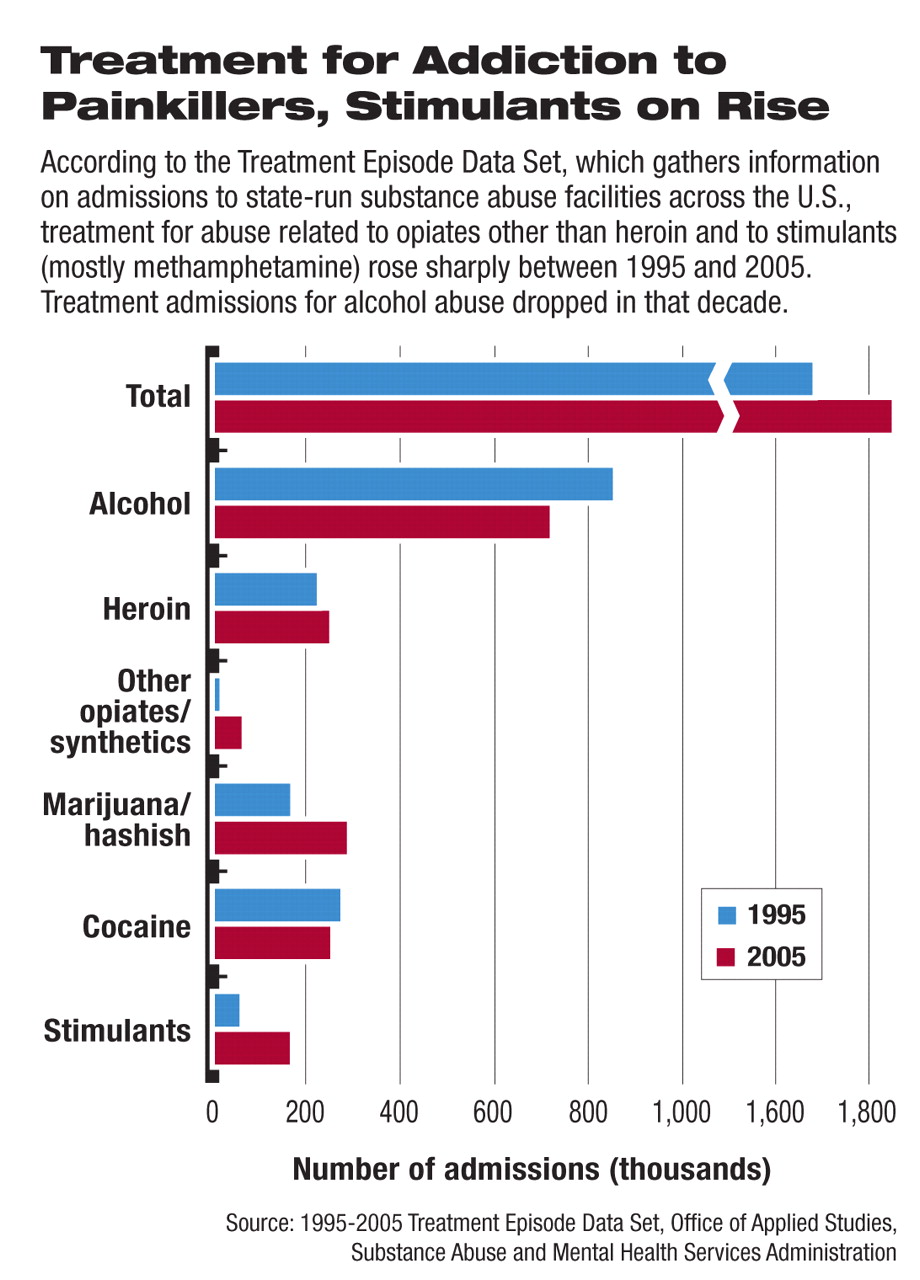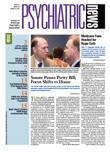Admissions to substance abuse facilities in the United States have increased slightly in the past decade or so, according to data from the Substance Abuse and Mental Health Services Administration (SAMHSA) released in August, from about 1.68 million admissions in 1995 to 1.85 million admissions in 2005.
Most notably, treatment for addiction to stimulants and synthetic opiates rose steeply in that period. And alcohol abuse accounted for 723,646—or 39 percent—of substance abuse treatment admissions in 2005, down from 858,287 in 1995, when it accounted for 51 percent of such admissions.
For about half of the admissions involving alcohol abuse, there was secondary drug abuse as well, according to the report, “Treatment Episode Data Set (TEDS) 1995-2005: National Admissions to Substance Abuse Treatment Services.”
SAMHSA's Office of Applied Studies has collected admissions data for 15 years from facilities that are licensed or certified by state substance abuse agencies to provide substance abuse treatment; the agency began collecting discharge data in 2000, as part of the TEDS report. Data for the report were collected through October 2006.
The data showed that those admitted to treatment for alcohol abuse tended to be older than those receiving treatment for drug abuse—the average age at admission was 40 for alcohol-related disorders, while the ages of those who received treatment for various drug problems averaged from the mid 20s to late 30s.
Opiates (mostly heroin) accounted for 322,232 admissions (17 percent), marijuana for 292,250 admissions (16 percent), cocaine for 256,491 admissions (14 percent), and stimulants for 170,470 admissions (9 percent) in 2005.
The report captured trends in drug and alcohol abuse and treatment over time along with demographic information on those who received treatment throughout the United States.
Among the trends showing up in the data, for example, is that treatment for primary heroin abuse declined between 1995 and 2005. Heroin use accounted for 93 percent of all primary opiate admissions in 1995 (227,989), but fell to 79 percent in 2005 (254,345). This percentage decline is explained by a rise in admissions due to the abuse of opiates other than heroin in that period. These opiates include methadone, codeine, hydrocodone, hydromorphone, meperidine, morphine, opium, oxycodone, pentazocine, propoxyphene, tramadol, and other drugs with morphine-like effects.
Opiates other than heroin accounted for 16,121 of primary opiate admissions in 1995 (7 percent) but increased to 67,887, or 21 percent, in 2005 (see
chart).
The researchers also gathered information on the demographics of those treated for substance abuse: while about 68 percent of primary heroin admissions were male, gender distribution among primary non-heroin opiate admissions was more evenly divided (54 percent were male).
Three-quarters of those admitted for marijuana abuse were male, and they had an average age of about 24.
Methamphetamine and amphetamine treatment admission rates were the highest in the Pacific and Mountain states, according to the report, and male patients accounted for a little over half of those admissions (54 percent).
The report also tracked information on the age of patients who received treatment for substance abuse problems and revealed increases in the proportions of both younger and older patients in certain groups. Among adolescents aged 12 to 17, there were 122,910 admissions in 1995, and this number rose to 142,646 a decade later. There was a dramatic increase in the number of admissions for older Americans—among those aged 45 to 64, there were 199,501 admissions in 1995 and 370,600 by 2005.
Data from the 2005 Treatment Episode Data Set are posted at<www.oas.samhsa.gov/teds2k5/tedshi2k5toc.htM>.▪

